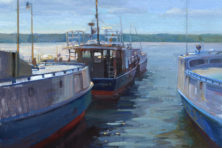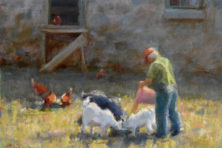Questions & Artists: Painter David Curtis
- Share
- Tweet
- Pin
- Share
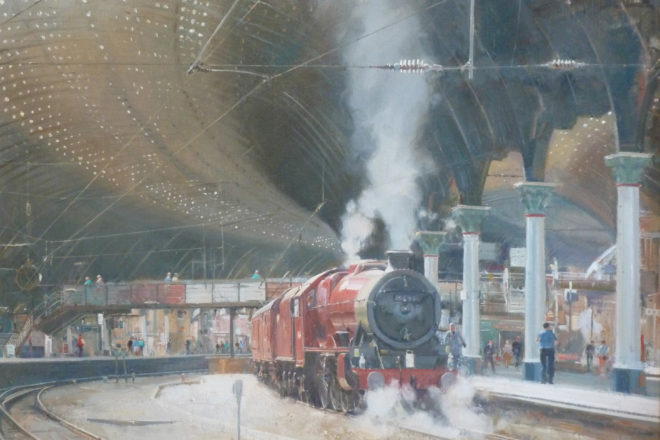
Ten years ago when I began to paint in watercolor I heard the name David Curtis. He was then acknowledged as a master of both watercolor and oil painting and had many instructional books. Today Mr. Curtis has won many awards for his paintings, both watercolor and oil, and is a member of The Royal Institute of Oil Painters and The Royal Society of Marine Artists (RSMA). His work is in collections worldwide.
For those that have read my interviews over the past eight years, you will perhaps remember Steve Hall, an accomplished English watercolor painter and a biographer of the great Edward Wesson. His new book will have a forward written by David Curtis. Many of my Door County painting friends use one of Curtis’s books, A Light Touch: Painting Landscapes In Oils, as a reference. All his books are outstanding as are his DVDs. The Artists’ Place in McKinney, Texas carries his DVDs in the United States. I know you will enjoy reading the following interview with this incredibly gifted man. His website is djcurtis.co.uk.
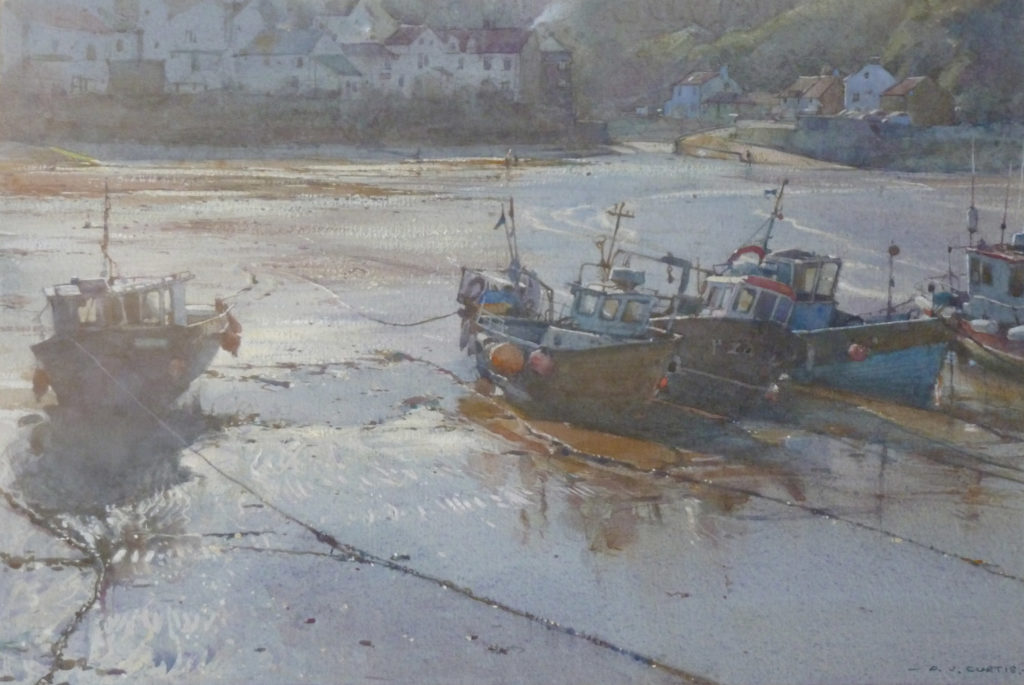
“Outer Harbour, Staithes.”
Randy Rasmussen (RR): David, can you remember when you knew you wanted to be a professional artist?
David Curtis (DC): Probably around the mid to late twenties, when you start to think longer term, though fully realizing I needed a stable income stream from my first career as a draughtsman/designer.
RR: Almost every artist I have interviewed has one person they felt really gave them that extra nudge to believe in themselves. Was there such a person in your life?
DC: There was an extremely fine painter, completely unsung in terms of recognition (his choice) but also a wonderful teacher who was my mentor, I suppose, in the mid to late ‘60s. He taught me so much about the skills of composition, tone and colour values which have held me in good stead for all the years ahead. He was Andy Espin Hempsall.
RR: In the United States, the middle and secondary schools provide classes in art. How did the British schools provide instruction for you as you were growing up?
DC: Art education was on the curriculum, but in the grammar school context, was not especially nurtured. I had a capable art teacher who was quite supportive, which allowed me to achieve at least some academic achievement in my time in full education!
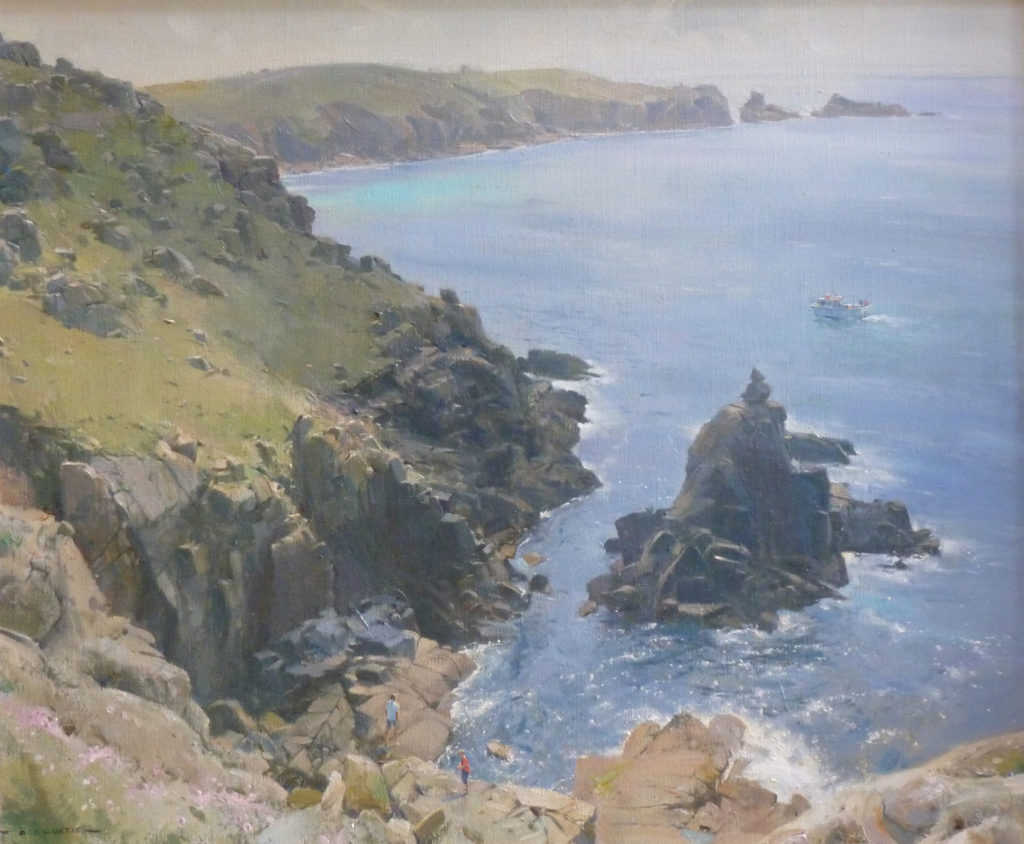
“Cornish Coastline.”
RR: You have a background in engineering and design. How did this training help you in your fine arts career?
DC: This dynamic period in my life taught me discipline, how to manage people, and how to organize budgets and other business essentials. As with any senior management role as it developed, the work was “full on” as they say and there was always the situation of serving “two masters.” By the mid ‘80s I was becoming fairly established on the painting front with already election to the RSMA and representation in the UK gallery network.
RR: The year is 1988. What do you remember about making the big step to becoming a full-time painter?
DC: In that year I received a memo on my desk one Monday morning which read: “During the summer months we will be organising senior management training over six to eight weekends.” I thought, all that summer painting time lost. So considering all things, I tended my resignation the following day!
RR: How does one become a member of the Royal Institute of Oil Painters?
DC: A long haul of years of submitting to the Royal Society open exhibitions in order to build up a track record of successful acceptance over time. Once membership is gained, a whole new world of opportunity opens up, with access to commissions and the London gallery connections.

“Staithes Harbour.”
RR: How would you describe your work?
DC: I wish to convey light, mood and atmosphere through varied subject matter with figurative content where needed. I feel the need to work in both oils and watercolour, each medium chosen where the presented subject suggests its interpretation in either of the two choices. I guess I fit into the area of a slightly more refined impressionism!
RR: I notice a difference between your early work and current work; to me it feels a bit softer. Have you changed your palette in the last few years?
DC: I think my palette has evolved insidiously into a more subtle range of colours and tones, mostly non insistent, in order to capitalise on close tonal relationships. The results so evoking the subtleties of the chosen subject.
RR: You are skilled and have written books on both watercolor and oil painting. Do you have a preference?
DC: I have equal joy in both media and have tried to convey the magic of both in my books and films. They have all been generally instruction titles, but since the art world is awash with basic “How to do it” books, I have geared mine towards the more intermediate painter, and have included my personal thoughts and anecdotes to try to make a more rounded publication.
RR: You have exhibited and painted around the world. If there were one scene so perfect you could paint it again, where would it be?
DC: Difficult one this. I suppose one or two stunning subjects in Rome or Barcelona, so I’ll go for the Symmetrical Churches, Via Del Corso, Rome.
RR: Thank you.

